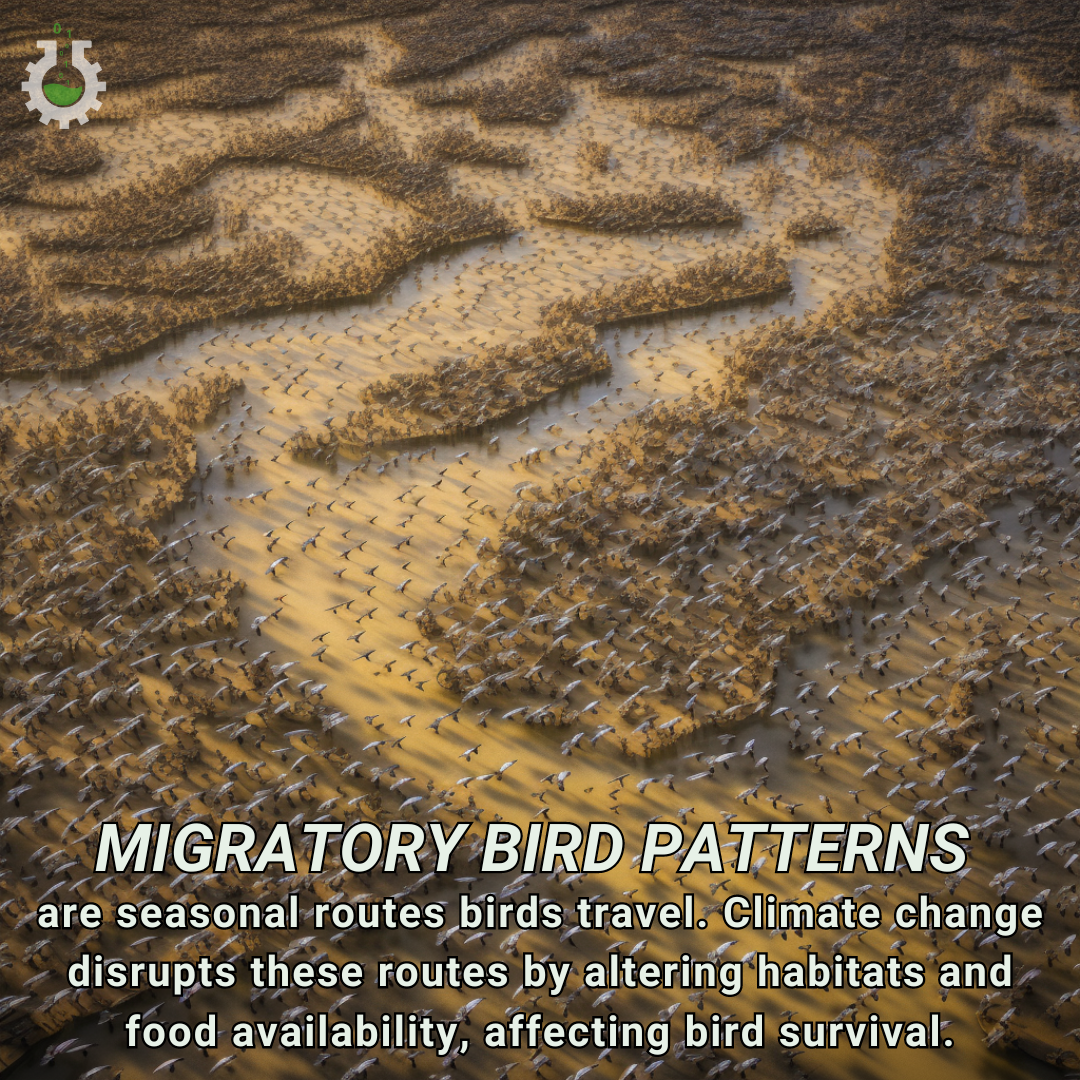June 19, 2024
Climate Change Poster Collection of the Day – Migratory Bird Patterns
Book a Demo
Today’s Climate Change Poster Collection highlights Migratory bird patterns, refer to the regular, often seasonal, movements of bird species between their breeding and wintering grounds. These journeys, which can span thousands of miles, are driven by the need to find optimal conditions for feeding, breeding, and raising their young. Migratory birds rely on a delicate balance of environmental cues—such as temperature, daylight, and the availability of food sources—to time their migrations precisely. However, as climate change continues to reshape our environment, these intricate patterns are increasingly being disrupted, leading to profound impacts on both the birds and the ecosystems they inhabit.
As global temperatures rise and weather patterns become more unpredictable, the traditional cues that migratory birds rely on are being thrown into disarray. For instance, warmer winters in some regions are causing birds to depart later than usual, while earlier springs in breeding grounds are leading to mismatched timing for food availability, crucial for feeding their young. This phenomenon, known as “phenological mismatch,” occurs when the life cycles of birds and their food sources fall out of sync. For example, if insects emerge earlier in the spring due to warmer temperatures but migratory birds arrive at their breeding grounds at the usual time, there may be insufficient food to support the birds and their offspring. Such mismatches can lead to reduced reproductive success and ultimately impact bird populations.
Additionally, the alteration of habitats along migratory routes, due to climate-induced changes like deforestation, urbanization, and wetland degradation, is further complicating their journeys. Many migratory birds rely on specific stopover sites to rest and refuel during their long migrations. However, these critical habitats are increasingly threatened by human activities and climate change, leading to habitat loss and fragmentation. As a result, birds may be forced to travel longer distances without adequate rest or food, increasing their risk of exhaustion and mortality.
Furthermore, extreme weather events, such as hurricanes, storms, and heatwaves, are becoming more frequent and intense due to climate change. These events can have devastating effects on migratory birds, both during their journeys and in their breeding and wintering grounds. For example, hurricanes can destroy coastal habitats and disrupt migratory routes, while heatwaves can lead to dehydration and heat stress. Such events can cause significant population declines, particularly for species already facing other threats such as habitat loss and pollution.
These disruptions not only threaten the survival of individual species but also have cascading effects on ecosystems that depend on these birds for functions such as pollination, seed dispersal, and pest control. Migratory birds play a vital role in maintaining the health and balance of ecosystems. For instance, they help control insect populations by feeding on pests, thereby reducing the need for chemical pesticides. They also contribute to plant reproduction by pollinating flowers and dispersing seeds, promoting biodiversity and ecosystem resilience.
Conservationists are now racing against time to study these patterns and implement strategies to mitigate the impacts. One approach is to create and protect stopover habitats that provide safe resting and feeding sites for migratory birds. This can involve restoring and conserving wetlands, forests, and other critical habitats along migratory routes. Additionally, conservationists are working to adjust conservation timelines and management practices to account for the changing phenology of migratory birds. This may include altering the timing of habitat restoration activities, adjusting hunting seasons, and implementing adaptive management strategies.
International cooperation is also crucial for the conservation of migratory birds, as their journeys often span multiple countries and continents. Collaborative efforts, such as the establishment of migratory bird treaties and conservation networks, can help protect these species across their entire migratory range. Public awareness and engagement are also essential, as individuals can contribute to conservation efforts by supporting bird-friendly practices, such as creating bird-friendly gardens, reducing pesticide use, and participating in citizen science projects.
The silent shift in migratory bird patterns serves as a poignant reminder of the far-reaching and often unpredictable consequences of climate change, urging us to pay closer attention to the intricate web of life that sustains our planet. By understanding and addressing the impacts of climate change on migratory birds, we can help ensure the survival of these remarkable species and the ecosystems they support.
Discover an inspiring collection of climate change poster.



